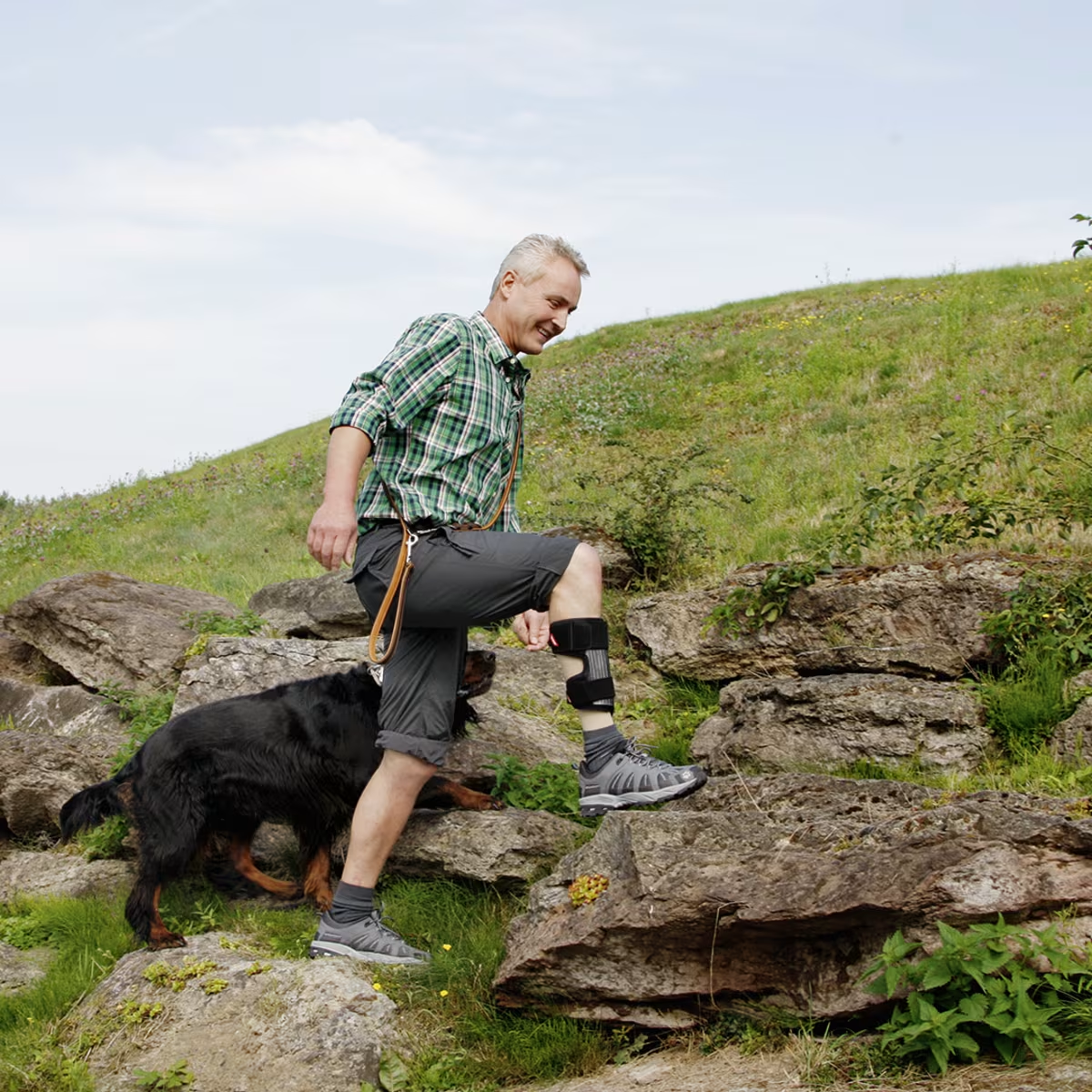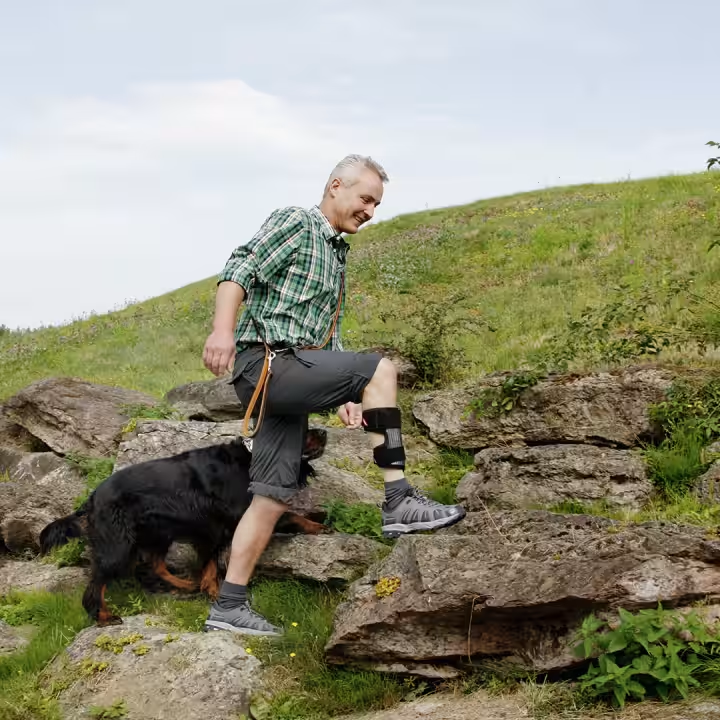


Ankle joint and foot orthoses
Foot orthoses and foot supports relieve the strain on tendons and joints. They support the healing process and help people carry out movement patterns more effectively.
Foot orthoses and foot supports relieve the strain on tendons and joints. They support the healing process and help people carry out movement patterns more effectively.
Relief and stability
Your ankle joint connects your lower leg to your foot. So if you injure this joint or the adjacent tendons, it will not only be painful but will also severely restrict your mobility. Depending on your symptoms, you may need to wear a foot orthosis or foot support temporarily as part of therapy. In other cases, you may need to wear it permanently to relieve strain or stabilise joints, tendons or ligaments, or to increase your mobility.
What is a foot orthosis?
Orthoses are medical devices. They are prescribed by a doctor, who will typically consult an O&P professional to select the most suitable device. There are three main types of orthoses for ankle joints and feet: for stabilisation, for mobilisation and to relieve strain. These variants are specially designed to perform their respective purposes. Orthoses that are specially designed to relieve strain, for example, will often include functional elements such as joints that control, support and/or restrict movement. These orthoses are primarily prescribed as part of medical treatment. A foot orthosis impacts the entire locomotor system. For example, it can help to relieve shoulder or back pain resulting from postures users assume to avoid discomfort and can accelerate the healing process.

What is a foot support?
The primary function of a foot support is to stabilise the joint without restricting its range of motion. For this reason, supports are often worn not only during therapy but also afterwards for everyday activities, where they protect the joints and prevent injury. Unlike ankle and foot orthoses, supports are made of flexible material. However, the material is so finely meshed that the support fits very snugly. It stabilises the joint and also exerts compression on the area. Supports feature integrated pads on the inside and the outside. These anatomically shaped, elastic inserts have a massage effect that stimulates the tissue beneath.

When do I need an orthosis for my ankle joint?
Your doctor may prescribe you a foot orthosis for a variety of reasons. If you’ve fractured your heel bone, for example, you may be prescribed a heel relief orthosis to support the healing process and enable you to gradually increase weight bearing during therapy. Orthoses have also been shown to provide relief for people who have ankylosis of the lower ankle joint as a result of arthrosis.
If you injure your ligaments while engaging in sports or other everyday activities, multi-purpose orthoses such as the Ottobock Malleo TriStep can help. Thanks to its special design, this foot orthosis can be adjusted to the different phases of the recovery process – acute inflammation, new tissue formation and tissue maturation. Recovery is supported by a special exercise routine.
When do I need a support for my ankle joint?
Irritation or swelling in the ankle joint, ligament instability, joint effusion or achillodynia (caused by strain to the Achilles tendon) can be painful and restrict natural movement patterns. A foot support selected carefully to address the symptoms will stabilise the joint; it can also reduce swelling and treat effusion faster thanks to its additional compression effect. Supports are also sometimes used after treatment for a ruptured Achilles tendon.
